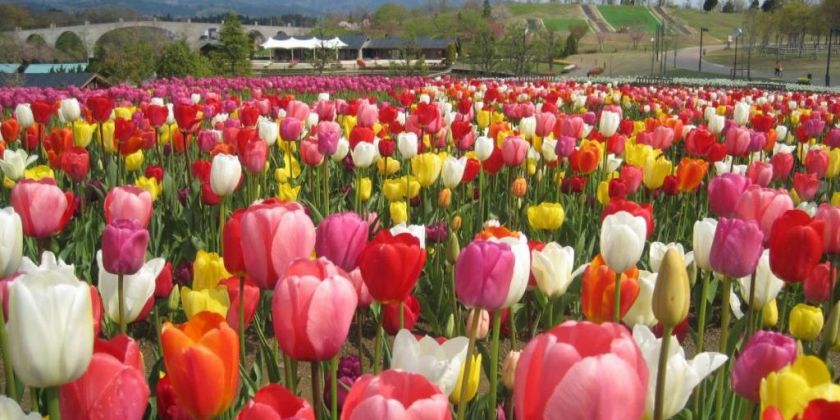
About Nagaoka
Nagaoka is the second-largest city in Niigata Prefecture and is situated along the Sea of Japan, across the strait from Sado Island.
The city has been a center of agriculture and manufacturing for centuries, with a focus on rice farming, sake brewing, and fermented food production. It is known for its variety of historic shrines and temples, tasty regional food, breathtaking landscapes, hot-spring inns, cultural events, and a world-class fireworks festival.
【Reference】 English translated version of the original site
History
During the chaotic Boshin War (1868–1869), Nagaoka allied with pro-shogunate domains and suffered defeat against the pro-imperial forces of the new government. Nagaoka was devastated in the aftermath but underwent a rapid reconstruction period in the late nineteenth and early twentieth centuries. During World War II, heavy firebombing again reduced much of the city to rubble, but it rallied once more to rebuild and flourish.
Natural Beauty
Cuisine
Ramen lovers may appreciate the distinct regional style of ginger and soy sauce ramen, which was developed in Nagaoka to help people withstand the frigid weather. Other famous local specialties include hegi soba (a variety of buckwheat noodles), tochio aburage (thick, deep-fried tofu), and sasa dango (mugwort-infused sweets filled with red bean paste and wrapped in bamboo leaves).
Land of Fireworks
Access
*This English-language text was created by the Japan Tourism Agency.
Nagaoka City Promotion Video
Please enjoy the video!!
Various tourist destinations
-
Festival
Every year on August 2nd and 3rd, "Nagaoka Fireworks Festival" is held.
-
Foods & Sake
There are some Nagaoka City original gourmet foods, so you can never hesitate about what to eat.
-
Parks & Gardens
Nagaoka City has parks and gardens where you can enjoy the four seasons. Please come by all means!
-
Hot springs
-
Museums & Temples
There are many museums and temples in the city.
-
Yamakoshi area
Yamakoshi area where you can enjoy nostalgic Japanese scenery.
Beautiful photo collection for each season
Yukiwari grass begins to bloom in early March, and tulips at Echigo Hillside National Park are at their peak from mid-April to early May.
The fleeting summer of Nagaoka is packed with enjoyable moments at the beaches,mountains,and fireworks shows.
Tourists from inside and outside the prefecture gather for events such as the Teradomari Fish Market Street and the Nagaoka Fireworks Festival, which are lively.
In Autumn, the harvest season, maple leaves turn crimson as if they were celebrating bumper crops.
In the terraced rice fields of the Yamakoshi region, which is the original scenery of a Japanese village, the rice ears shine golden and the harvest season begins in September. At the maple garden, the autumn leaves are in full bloom from late October to late November, creating a peaceful and peaceful Japanese-style space.
Winter brings a blanket of snow and praises the beauty of the crisp air and magical landscapes.
The snowy scenery of Homodaira Onsen, which is located at the base of Takaryu Shrine, which is known for the dragon god of business prosperity, is also very picturesque.
Accommodations & Hot springs
From private trips with family and friends to staying with a large number of people such as work and educational trips, we will meet various needs.
Please click the button below to download the related materials and call the facility you care about.
Japanese Nationally Important Agricultural Heritage Systems —Rice and Carp Cultivation System Using Meltwater—
This certification signifies that this community’s agricultural system, handed down continuously through the generations, of using terraced rice paddies and terraced ponds to cultivate rice and nishikigoi has been recognized to be representative of Japanese culture. This certification also has a deep connection with the citizens’ pride and the development of regional brands.
English travel document
Staff's Reccomendations from our FB
We'd like to introduce good sightseeing spots for foreigners with our Facebook Page.
<Teradomari Fish Market Street>
<Echigo Hillside Park>
<Momijien>
SNS
We write some post about Nagaoka tourism Information on our Facebook and Instagram.
-
Facebook
-
Instagram
Transportation
Nagaoka is easily accessible from Tokyo.
It takes one hour and 40 minutes.
From Osaka:5 hours and 30 minutes
From Kanazawa:3 hours and 40 minutes
From Nagoya:3 hours and 30 minutes
From Sendai:2 hours and 25 minutes
From Nagano:2 hours and 10 minutes
From Takasaki:55 minutes
Echigo Yuzawa:25 minutes (one hour and 20 minutes by Train)
From Niigata:25 minutes (one hour and 20 minutes by Train)
Address
Nagaoka Civic Center(2F) 2-2-6 Otedori,Nagaoka,Niigata 940-0062
Email:info@nagaoka-navi.or.jp
<Nagaoka Tourist Information Center>
2-794-4 Jonai-cho,Nagaoka,Niigata 940-0061
E-mail:eki@nagaoka-navi.or.jp




































